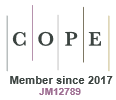Species-groups within the Australopapuan hulid frog genus Litoria Tschudi
MJ Tyler and M Davies
Australian Journal of Zoology Supplementary Series
26(63) 1 - 47
Published: 1978
Abstract
The Australopapuan hylid frog genus Litoria Tschudi has been redefined on the basis of a suite of osteological, myological and external characters. The grouping of species according to the presence or absence of other characters has resulted in the recognition of 37 infrageneric units of closely related species termed 'species-groups', These groups and the number of constituent species are: adelaidensis (1), albolabris (1), angiana (1), arfakiana (3), aruensis (5), aurea (7), becki (6), bicolor (7), booroolongensis (1), brevipalmata (1), bulmeri (1), caerulea (2), citropa (4), coplandi (1), dorsalis (4), dorsivena (1), eucnemis (2) , ewingi (4), freycineti (2) , infrafrenata (2), jeudei (1), latopalmata (31, lesueuri (1), leucova (1), louisiadensis (1), maculata (2), meiriana (1), nannotis (3), napaea (1), nigrofrenata (2), nigropunctata (3), peroni (5), prora (1), quadrilineata (1), rubella (6), thesaurensis (3), vagabunda (1). For each group the principal definitive characters are listed, together with abbreviated synopses of biological and geographical data. The species-groups represent three major categories: A, terrestrial species with elongate, unwebbed fingers, long hindlimbs and small, pigmented eggs; B, arboreal species with moderately to fully webbed fingers, shorter legs and small, pigmented eggs; C, scansorial and arboreal montane species with slightly to moderately webbed fingers, variable leg lengths and large, unpigmented eggs. These categories correlate with geographic distribution and probably represent separate phyletic lineages. Category A is almost exclusive to Australia; category B is almost equally distributed at lowland elevations in Australia and New Guinea, and category C is almost exclusive to New Guinea.https://doi.org/10.1071/AJZS063
© CSIRO 1978


